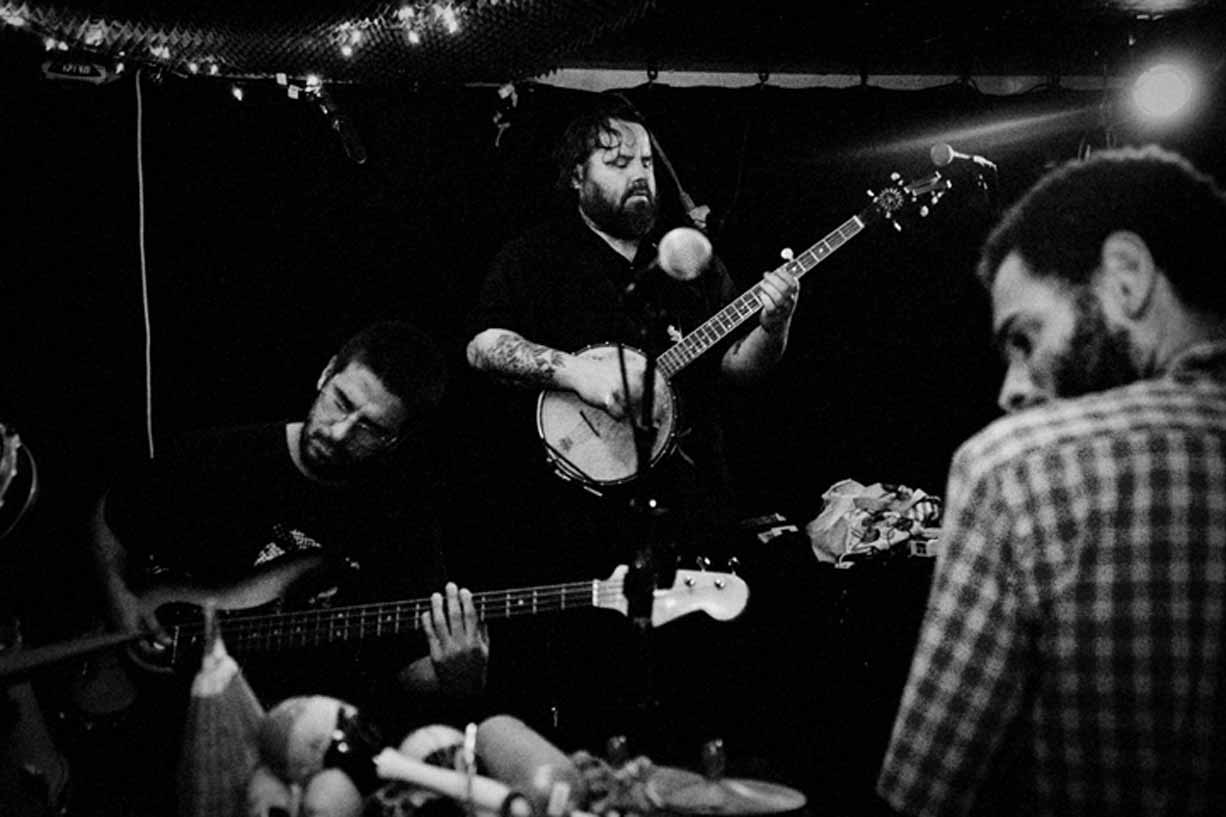It’s a pretty safe bet that whoever coined the phrase “post-punk” didn’t envision Nathan Bell‘s music. Likewise, it’s unlikely that the average banjo picker ever envisioned the instrument being manipulated to produce the array of sounds — from haunting dirges to toe-tapping, sanguine, rhythmic tours de force — that Bell wrings from his instrument.
To be fair, it’s not as if Bell made the transition from punk rocker to folk experimentalist overnight, out of nowhere. The multi-instrumentalist played bass in the seminal trance-inducing rock band Lungfish from 1996 to 2003. Even then, he says, the grit and twang of the indigenous music of the Maryland backwoods was seeping into his psyche.
“Growing up in rural Virginia, my father always had an interest in banjo music,” Bell says from his adopted hometown of Baltimore. “He gave me his banjo, but due to an introduction to punk and hardcore music in the early ’80s, I swayed more towards playing cheap electric guitars with way too much distortion rather than pursuing the folk music of banjo.”
It wasn’t until later in the ’90s that Bell began to find the call of his unique heritage overwhelming. Having recorded with more than a dozen disparate bands, including P.W. Long, Miighty Flashlight, and Television Hill, Bell says that he became engulfed with all facets of folk music, both domestic and foreign.
“As far as the style in which I write, the influence first came to me when my father took me to the house of a superb banjo player in Pennsylvania,” he says. “To my surprise, he was an expert on classical music on a five-string banjo.”
The experience of seeing a talented musician stepping outside the normal confines of his instrument had an immense and lasting effect on the young Bell.
“This completely justified my frustrations of not being able to pick the Scruggs manner (a three-finger picking style) and to just ride down the river in my own raft of writing,” he says.
Bell’s education took another twist when he became friends with Peter Ross, a renowned builder and player of gourd banjos, a primitive instrument first made by slaves who formed the body of the banjo from a gourd. Ross has painstakingly researched both the construction and playing techniques associated with these once-forgotten but historically important instruments.
“It was from Pete that I learned the technique of frailing, otherwise known as the clawhammer technique,” Bell says.
Unlike the more widely used Scruggs picking style, the clawhammer uses a primarily downward picking motion. The hand, clenched into a claw, with the strumming index or middle finger kept stiff, strums the strings with a wrist motion rather than the flicking of the fingers. It’s an extremely rhythmic technique, and one that Bell employs to great effect in his most recent project, Brassa Bell.
Luciano Luis Valerio, owner of Brazil’s Desmonta Records, frequently brings foreign musicians, including Joe Lally (Fugazi), Jeff Parker (Tortoise) and Josh Abrams (Town & Country) to Brazil. Valerio heard Bell’s music and brought him to Brazil to play with Richard Ribero, Rogerio Martins, and himself — a group that would become Brassa Bell.
This hodgepodge grouping was instantly positive, according to Bell, who says that the group stumbled upon a new and bold musical form despite its members’ disjointed playing styles.
“The combination of electric banjo music with Brazilian rhythms has been a sound defining itself through us,” Bell says. “In other words, a completely coincidental collage of music, rhythms, and sounds.”

